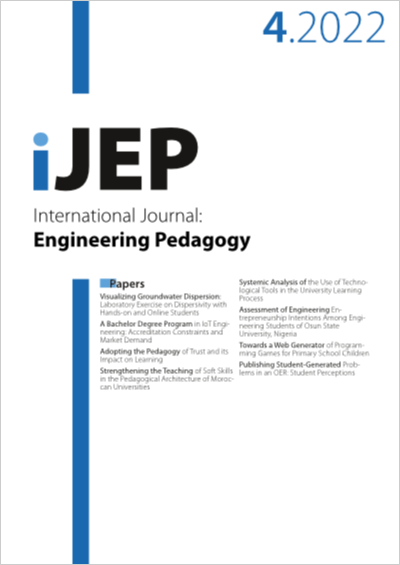Publishing Student-Generated Problems in an OER
Student Perceptions
DOI:
https://doi.org/10.3991/ijep.v12i4.30429Keywords:
Statics, Open Educational Resource (OER), motivation, creativityAbstract
Fundamental engineering courses provide learning opportunities for students to develop problem solving and creativity skills, connect theoretical course material to the real-world, and solve complex, abstract problems such as those found in the workplace. Through a mixed methods study of students in a statics course in a small Canadian university, we explored student motivation and perception of composing and publishing their own course-relevant problems in an open educational resource (OER) textbook. We found that generating and solving their own problems for each of the six homework assignments helped students to anchor theory in the real-world, be creative, and understand the material more fully. In total, 93% of students in the course created at least one student-generated homework problem, and after the semester ended, 58% of students submitted a combined total of 59 high-quality, interesting, real-world examples to be included in the OER textbook. Of the 28 study participants, 26 students (93%) felt the activity should be repeated in future years. Students were motivated to publishing examples in the OER textbook by a desire to help future students and gain understanding of the material. Students found generating problems time-consuming, but enjoyed expressing their creativity.
Downloads
Published
How to Cite
Issue
Section
License
Copyright (c) 2022 Libby (Elizabeth) Osgood

This work is licensed under a Creative Commons Attribution 4.0 International License.



